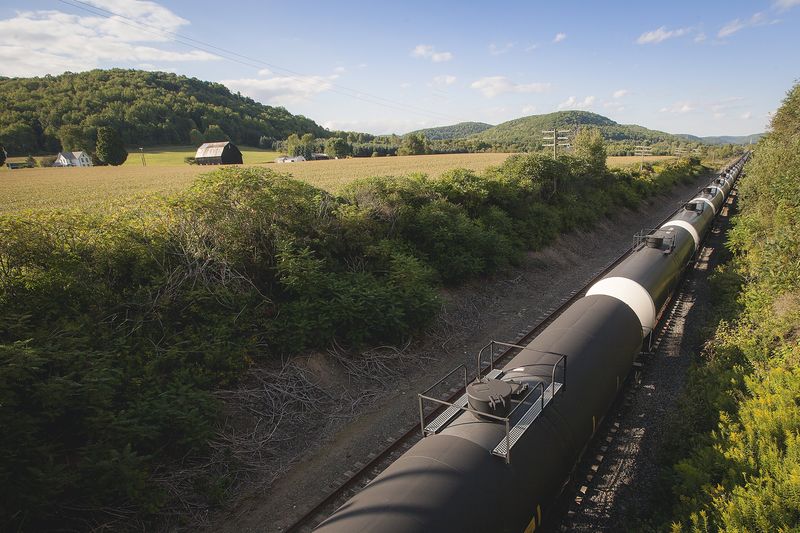* U.S. gasoline futures at record low
* Oil companies slash budgets * Brent 6-mth contango at steepest since 2009
* Prices could fall to mid-teens - PVM
(Adds details, milestones,)
By Devika Krishna Kumar
NEW YORK, March 23 (Reuters) - Oil prices extended their
decline on Monday, with record low U.S. gasoline prices leading
the energy complex lower, as the coronavirus pandemic crushes
demand worldwide after travel and industrial activity contracted
across the globe in a bid to stem the spread of the virus.
Brent crude LCOc1 futures fell 47 cents to $26.51 a
barrel, a 1.7% percent drop, by 1:26 p.m. ET (1726 GMT). West
Texas Intermediate (WTI) crude CLc1 futures for May delivery
fell 4 cents, or 0.2%, to $22.59 a barrel.
Gasoline futures RBc1 in the United States, the world's
top consumer of the motor fuel, tumbled more than 20% to 46.74
cents a gallon, their lowest on record.
Both crude benchmarks have dropped for four straight weeks,
with WTI slumping 29% last week, its steepest slide since the
outset of the U.S./Iraq Gulf War in 1991.
The demand destruction from the coronavirus known as
COVID-19 comes as the oil market contends with the unexpected
price war that erupted between producers Russia and Saudi
Arabia, effectively ending an OPEC+ alliance and flooding the
market with barrels.
Oversupply is so extreme that regulators in Texas considered
curbing production there for the first time in nearly 50 years.
The United States plans to send a special energy envoy to Saudi
Arabia to work with the kingdom on stabilizing the global oil
market, U.S. officials said on Friday. Bankers, analysts and producers are downgrading demand
forecasts by the day, with numbers fluctuating around a loss of
around 10 million barrels per day. Oil demand this year will fall 2.8 million bpd, the largest
single-year drop in nearly 40 years, Morningstar analysts
projected.
"Given that COVID-19 is disproportionately affecting
transportation demand, we think the hit to oil demand will
surpass the GDP impact," they said.
Refining margins for gasoline and jet fuel have tanked
because of decreased demand for transportation fuels, as the
pandemic has forced businesses to close and governments to push
residents to avoid travel and public places. Many oil companies have rushed to cut spending and
shareholder payouts while refiners worldwide are slashing
production or considering cuts as demand for fuel evaporates.
The physical market at Cushing, Oklahoma, the delivery point
for WTI futures signaled heavy oversupply with prices to roll
positions forward to the next month sinking to the weakest in
nearly a decade. The six-month spread of Brent futures LCOc1-LCOc7 hit its
steepest since 2009 at a discount of around $9, a contango
structure which reflects the current oversupply.
Oil prices have dropped more than 60% since the start of the
year, while everything from coal to copper have also been hit by
the coronavirus crisis, and bond and stock markets are in rarely
charted territory. MKTS/GLOB
"Set against this dismal outlook, the downward spiral in oil
prices is poised to continue and may well reach the mid-teens.
Put simply, the search for a price floor is by no means over,"
PVM analysts said in a note.
Swiss bank Julius Baer saw oil prices recovering to above
$30 a barrel by mid-year, but added that they will likely
continue to swing wildly in the very near term.
<^^^^^^^^^^^^^^^^^^^^^^^^^^^^^^^^^^^^^^^^^^^^^^^^^^^^^^^^^^^
Brent six-month contango https://reut.rs/2xkwDmg
^^^^^^^^^^^^^^^^^^^^^^^^^^^^^^^^^^^^^^^^^^^^^^^^^^^^^^^^^^^>
